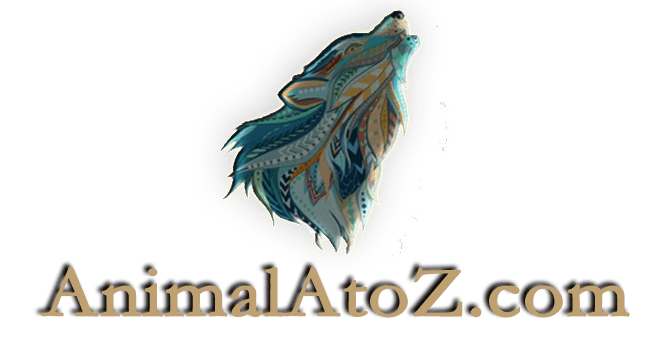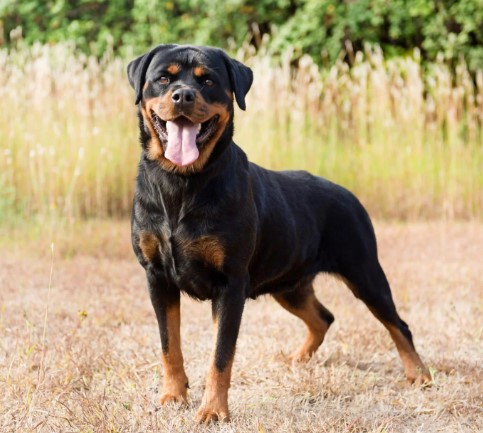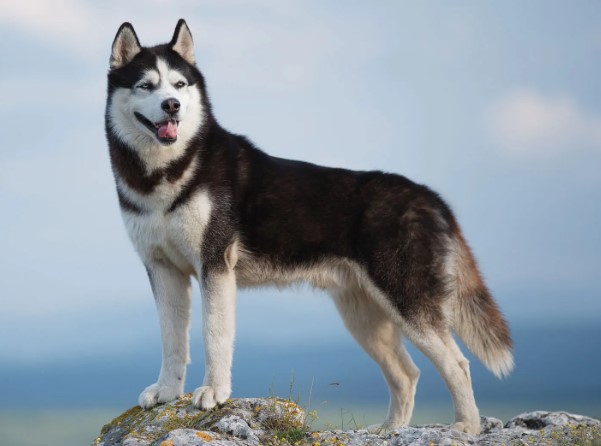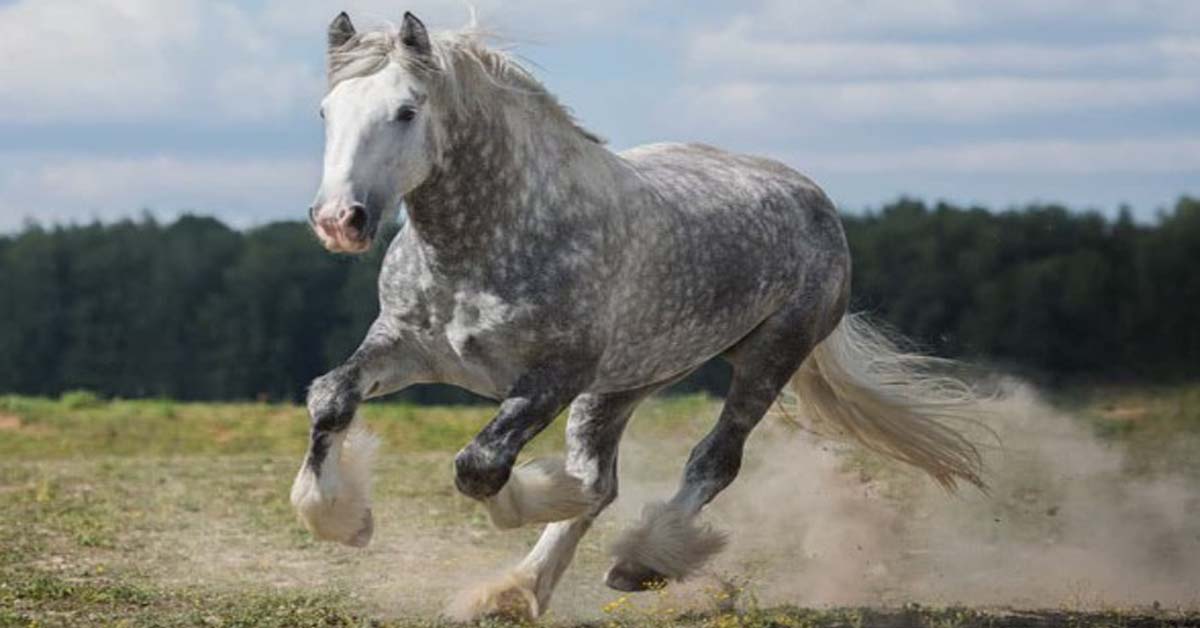The Dogo Sardo is a breed of working dog originating from the Italian island of Sardinia. Widely regarded as a type of Molosser or Mastiff, its exact relationship with other members of this family remains uncertain. Primarily utilized as a property and livestock guardian, the Dogo Sardo has a historical background as a hunting dog as well.
While relatively rare beyond its native island, the Dogo Sardo is gradually gaining popularity on the mainland of Italy as a protection dog. This breed is known by various names, including the Sardinian Mastiff, Sardinian Molosser, Dogo Sardo, Cani Trinu, Beltigadu, Pertogatzu, Jaguar, and Sorgolinu.
- Origin: Italy
- Size: Large
- Height: 22 – 27 inches (56 – 68 cm)
- Weight: 66 – 100 pounds (30 – 45 kg)
- Lifespan: 10 to 13 years
- Colors: Red, Grey, Fawn And Frumentino, Brown, Black, Brindle, Combinations Of the Above Colors
Dogo Sardo dog Breed Characteristics
Presenting to you among the many rare breeds, is the Dogo Sardo (or more accurately, the Dogo Sardesco or Cane Sardo), a rare and relatively unknown breed outside of Italy.
This distinctive breed is a lightweight Molosser primarily utilized as a guard dog, livestock guardian, and working dog. In its native Sardinia, the Dogo Sardo is known by various names, including the Sardinian Dogo, Gavoese Shepherd, Sorgolìnu, Club Perdigatzu, Pertogatzu, Jaguar, Truffing, Dogo Sardenesco, Cani Trinu, Beltigadu, and others.
Once thought to be extinct, the breed was rediscovered in the early 2000s thanks to the dedicated efforts of canine expert Roberto Balia. He located several specimens of the Dogo Sardo in the heart of Sardinia and documented his findings in the book “Canis Gherradoris” in 2005. Since then, interest in reviving this ancient breed has grown.
Currently, the Dogo Sardo is found in limited numbers in Sardinia, primarily in rural areas of the region. This geographical isolation has helped preserve the purity of the breed’s bloodline, maintaining its appearance virtually unchanged for centuries.
Despite its initial appearance suggesting aggressiveness, the Dogo Sardo is known to be an excellent pastoral dog, protecting livestock while also being a gentle and affectionate companion to farmers.
| Intelligence Level: High | Good With Pets: Yes |
| Hypoallergenic: No | Grooming: Average |
| Shedding: Average | Barking: Yes |
| Suitable For Apartments: No | Need For Exercise: High |
| Easy To Train: No | Good For First Time Owners: No |
| Health Issues: Hip And Elbow Dysplasia, Entropion, Ectropion, Patellar Luxation, Bloat |

History
This ancient working dog breed originated on the Italian island of Sardinia. Despite extensive research, the exact origins of this canine remain uncertain, with various theories proposed.
The Dogo Sardo served multiple roles as a property guardian, livestock guardian, and working dog. Developed as a member of the Molossoid or mastiff-type group of dogs, it was bred in the municipalities of Sardinia for a variety of tasks.
Historical accounts provide glimpses into the breed’s characteristics and uses. In the 1700s, the Jesuit Cetti described the Dogo Sardesco as a cross between a greyhound and a large dog, possessing distinctive traits. Additionally, records from the ancient state of Giudicato de Arborea described it as a strong-willed dog used for guarding and defense by its owner.
Throughout history, the Dogo Sardo has been employed as a working and hunting dog, and it remains a popular breed on the mainland of Italy today.
Appearance
The Dogo Sardesco boasts a distinct appearance within the Molosser family, characterized by its variability rather than adherence to a specific breed standard. As a result, its appearance can vary significantly, with no strict guidelines dictating its physical traits.
Generally, Dogo Sardescos are large but seldomly massive dogs, with most standing between 22 to 24 inches tall at the shoulder, although variations in height are common. Their weight typically ranges from 66 to 99 pounds, influenced by factors such as height, gender, build, and overall condition. Despite their muscular build, Dogo Sardescos should possess a lean and athletic physique rather than being overly bulky.
Traditionally, their tails are docked to a short length, a practice that is becoming less common and even prohibited in some regions. The breed’s natural tail is relatively long. Their heads are proportionate to their bodies, with a square shape being common, although individual dogs may exhibit variations. The muzzle is relatively long for a Molosser breed, yet still slightly shorter than the length of the skull.
Prominent yet rarely pendulous lips, well-developed jaws, and a black nose are characteristic features of the Dogo Sardesco. Ear cropping, though historically common, is declining in popularity and may be banned in certain areas. Natural ears are typically medium in size, folding down close to the sides of the head.
Their round, amber-colored eyes give the breed a serious and alert expression. The coat is short, thick, and smooth, with colors ranging from red, brown, slate, black, to brindle. While many Dogo Sardescos have black masks, it is not a universal trait within the breed.
Personality & Temperament
The Dogo Sardo is characterized by its alert, assertive, loyal, hardworking, intelligent, attentive, and vigilant nature. While inherently stubborn and sensitive to tone, this breed benefits greatly from training and socialization to foster obedience and kindness. Their keen senses make them excellent watchdogs, ever vigilant and quick-witted.
This robust breed excels as a guardian and protector, displaying loyalty and devotion once properly trained and socialized. Despite their affectionate and devoted nature towards their human family, they are not recommended for households with young children due to their strong-willed and potentially overpowering demeanor.
Given their assertive nature, the Dogo Sardo may not be suitable for inexperienced dog owners and may not always get along well with other pets in the household. They thrive best in environments where they are the sole dog or cohabitate with a single canine companion of the opposite sex.
Dogo Sardo Health Problems
No comprehensive health studies have been conducted on the Dogo Sardo, making it difficult to draw definitive conclusions regarding the breed’s health.
However, many canine experts believe that the Dogo Sardo is generally a healthy breed, with lower rates of common health issues compared to other Molosser breeds. While this does not imply that the Dogo Sardo is entirely free from genetic predispositions to health problems, it suggests that the breed may be relatively healthier than similarly sized purebred dogs.
Major Health Problems That Affect Dogo Sardo
A comprehensive list of health issues associated with Italian breeds includes:
Hip Dysplasia and Elbow Dysplasia: Inherited conditions that cause abnormalities in the hip and elbow joints, leading to potential lameness.
Entropion: An inherited eyelid abnormality where a portion of the eyelid folds inward towards the eye, causing irritation and potential corneal damage.
Ectropion: The opposite of entropion, where the lower eyelid droops or turns outward, leading to dry eye and chronic conjunctivitis.
Lens Luxation: Displacement of the lens from its normal position within the eye, potentially causing pain and vision loss if left untreated.
Progressive Retinal Atrophy (PRA): An inherited disorder affecting the retina, leading to blindness in affected dogs.
Bloat (Gastric Dilatation-Volvulus): A life-threatening condition where the stomach becomes distended and twisted, often occurring after eating a large meal or ingesting excessive air or fluid.
These health issues should be monitored closely, and affected dogs should receive prompt veterinary care to ensure their well-being.

Care
While the Dogo Sardo is considered a low-maintenance breed, it still requires some level of grooming care. Their short coat means they do not require extensive grooming, but regular maintenance is still necessary.
Information regarding the shedding of the Dogo Sardo is not readily available, but it is reasonable to assume that they may shed moderately. Regular brushing can help manage shedding, especially during seasonal changes. Additionally, routine tasks such as teeth brushing, nail trimming, and regular check-ups should be part of their grooming regimen, as with any other dog breed.
Best Food For
- Fromm Large Breed Puppy Gold Formula
- Canidae All Life Stages Chicken, Turkey, Lamb & Fish Meals Formula Dry Dog Food, 44 lbs.
- Wellness CORE Natural Grain Free Original Turkey & Chicken Dry Dog Food, 24 lbs.
- Blue Buffalo Life Protection Formula Natural Adult Dry Dog Food
Grooming
Brushing
To maintain their short hair, brush your Dogo Sardo every three days to prevent matting and tangles. It’s important to avoid brushing dry fur; instead, lightly spray it with a moisturizing spray before brushing, ensuring to brush in the direction of hair growth.
For longer show coats, daily brushing is necessary to keep them free from distractions. If your dog has a moderate haircut, brush their hair every two days to keep it well-groomed and tidy. Utilizing a fine-toothed comb can help ensure thorough grooming.
Bathing
When bathing your Dogo Sardo, do so only when they are significantly dirty or muddy to avoid drying out their skin, which can lead to itching and discomfort. Limit bathing to once a month to maintain skin health.
Before starting the bath, wet your dog’s entire body and place a large cotton ball gently within each of their ears. This helps prevent water from entering the ear canal and causing infections.
Begin bathing by applying shampoo starting from the neck and working your way towards the tail, using gentle circular motions to ensure the soap reaches the fur. Use conditioner as needed and rinse thoroughly with warm water. After bathing, dry your dog with a soft, clean towel to complete the grooming process.
Training
Behavior Training
Establishing a strong emotional bond between you, the owner, and your dog is crucial before beginning training on basic commands. Using positive and reward-based training methods fosters mutual respect and trust between you and your canine companion.
Gesture training can effectively teach fundamental commands such as “come,” “sit,” “down,” and “heel.” This approach is particularly beneficial for teaching dogs to perform complex or challenging behaviors with ease.
Obedience Training
Through obedience training, your Dogo Sardo will learn to adhere to household rules and behave appropriately in various situations. Given its assertive nature, obedience training is especially crucial for this breed. Obedience training encompasses teaching a dog to follow commands, ranging from basic instructions like “sit,” “down,” “come,” and “stay,” to more advanced skills for competition.
The training process may vary in duration and complexity depending on the dog’s abilities and temperament, as well as the skills and experience of the trainer. It is an ongoing process that requires patience, consistency, and a deep understanding of canine behavior.
Exercise
The Dogo Sardo breed requires a significant amount of physical activity to thrive. Known for their high energy levels, Dogo Sardos benefit greatly from being actively engaged in outdoor activities. Daily exercise is essential for their overall well-being and happiness.
Dogo Sardos particularly enjoy having access to spacious yards where they can freely play and release their pent-up energy. Without sufficient physical activity, they may resort to destructive behaviors such as chewing furniture or destroying their bedding out of boredom.
Regular walks alone are not enough to meet their exercise needs. It’s important to incorporate activities such as running, jogging, biking, hiking, and spending quality time outdoors with their owners to help them stay mentally and physically stimulated.
Running and jogging
A healthy Dogo Sardo is capable of running alongside you for over five long distances. Some Dogo Sardo owners opt to ride bikes while their dogs run alongside, as they are excellent runners. However, excessive daily running can put strain on their joints. Short runs or jogs are beneficial for keeping their bodies strong and healthy.
To prevent overexertion, vary the intensity and duration of exercise sessions. Additionally, if your dog appears fatigued during walks, consider exploring different routes to keep them engaged and prevent boredom.
cost
Another effective way to help your Dogo Sardo release excess energy is through playing fetch. Engaging them in a game of fetching their favorite ball or toy can keep them entertained for hours. However, it’s essential to ensure that the play area is safe and secure to prevent any accidents or injuries. Fetch is a highly suitable exercise activity for this breed.
Adoption Center
Other Dog Breeds and Further Research
Dogo Sardo Puppy price
Dogo Sardo’s puppy price is between $2000 to $4000.












6 thoughts on “Dogo Sardo: Lifespan, Health, Care, Food Special Info”